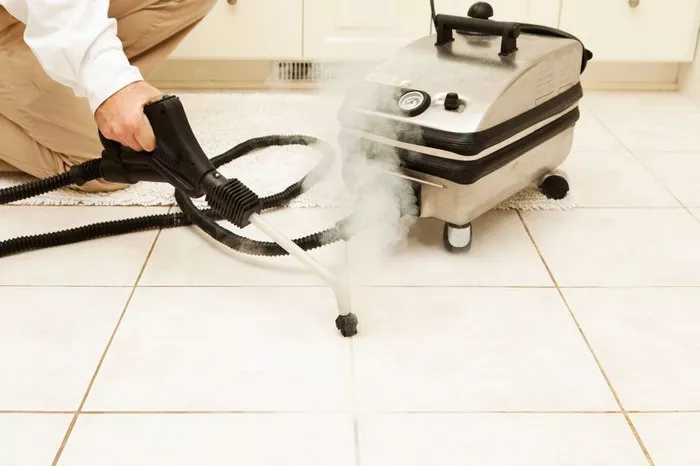In recent years, steam mops have gained popularity as an alternative to traditional mops and cleaning methods. Promoted for their efficiency and supposed ability to sanitize floors, many homeowners are curious about whether these devices truly deliver on their promises. In this comprehensive guide, we’ll delve into the workings of steam mops, their effectiveness in cleaning floors, and considerations to keep in mind.
Understanding Steam Mops
Steam mops are cleaning devices that use hot steam to sanitize and clean various types of flooring surfaces, including hardwood, tile, laminate, and vinyl. They typically consist of a water reservoir, a heating element, and a mop head. When activated, the heating element heats the water in the reservoir to produce steam, which is then released onto the mop head. The steam is applied to the floor surface, loosening dirt and grime, which can then be easily wiped away by the mop head.
The Cleaning Process
The cleaning process with a steam mop involves several key steps:
1. Preparation: Before using a steam mop, it’s essential to vacuum or sweep the floor to remove any loose debris. This prevents the mop from pushing dirt around and ensures a more thorough cleaning.
2. Steam Application: Once the floor is prepped, the steam mop is filled with water and heated according to the manufacturer’s instructions. The steam is then applied to the floor surface in controlled bursts as the mop is moved back and forth.
3. Mop Action: As the steam loosens dirt and grime, the mop head traps the debris and absorbs excess moisture, leaving the floor clean and dry.
4. Drying: After cleaning, it’s important to allow the floor to air dry completely to prevent any potential damage from moisture.
Effectiveness of Steam Mops
The effectiveness of steam mops in cleaning floors depends on several factors:
1. Type of Flooring: Steam mops are most effective on hard, sealed surfaces such as tile, hardwood, and laminate. They may not be suitable for unsealed wood or delicate surfaces that can be damaged by moisture.
2. Level of Soiling: Steam mops are excellent for removing light to moderate dirt and stains. However, for heavily soiled areas or stubborn stains, pre-treatment or additional cleaning methods may be necessary.
3. Sanitization: One of the touted benefits of steam mops is their ability to sanitize floors without the use of harsh chemicals. The high temperatures of the steam can kill bacteria and germs, providing a deeper clean and a more hygienic environment.
4. Ease of Use: Steam mops are generally easy to use and require minimal effort compared to traditional mopping methods. However, they may not be suitable for large or heavily trafficked areas, as frequent refilling of the water reservoir may be necessary.
5. Environmental Impact: Steam mops are considered more eco-friendly than traditional cleaning methods that rely on chemical cleaners. By using only water and heat, steam mops eliminate the need for potentially harmful chemicals that can pollute the environment.
Considerations Before Using a Steam Mop
Before investing in a steam mop, consider the following:
1. Flooring Compatibility: Ensure that your flooring is suitable for steam cleaning. While most hard, sealed surfaces can withstand steam mopping, delicate or unsealed floors may be damaged by moisture.
2. Manufacturer’s Instructions: Follow the manufacturer’s guidelines for proper use and maintenance of the steam mop to ensure optimal performance and longevity.
3. Safety Precautions: Take necessary safety precautions, such as wearing appropriate footwear and avoiding contact with hot steam, to prevent accidents and injuries during use.
4. Maintenance: Regularly clean and maintain your steam mop by emptying and descaling the water reservoir, replacing mop pads as needed, and storing it in a dry, well-ventilated area when not in use.
Conclusion
In conclusion, steam mops can be effective tools for cleaning floors, offering benefits such as sanitization, ease of use, and environmental friendliness. However, their effectiveness depends on factors such as the type of flooring, level of soiling, and proper usage. By understanding how steam mops work and considering these factors, homeowners can make informed decisions about whether steam mops are the right choice for their cleaning needs.
FAQs
Q1: Can steam mops be used on all types of flooring?
A1: Steam mops are most effective on hard, sealed surfaces such as tile, hardwood, and laminate. However, they may not be suitable for unsealed wood or delicate surfaces that can be damaged by moisture.
Q2: Do steam mops really sanitize floors?
A2: Yes, steam mops can sanitize floors by using high-temperature steam to kill bacteria and germs without the use of harsh chemicals. This provides a deeper clean and a more hygienic environment.
Q3: Are steam mops environmentally friendly?
A3: Yes, steam mops are considered more eco-friendly than traditional cleaning methods that rely on chemical cleaners. By using only water and heat, steam mops eliminate the need for potentially harmful chemicals that can pollute the environment.

